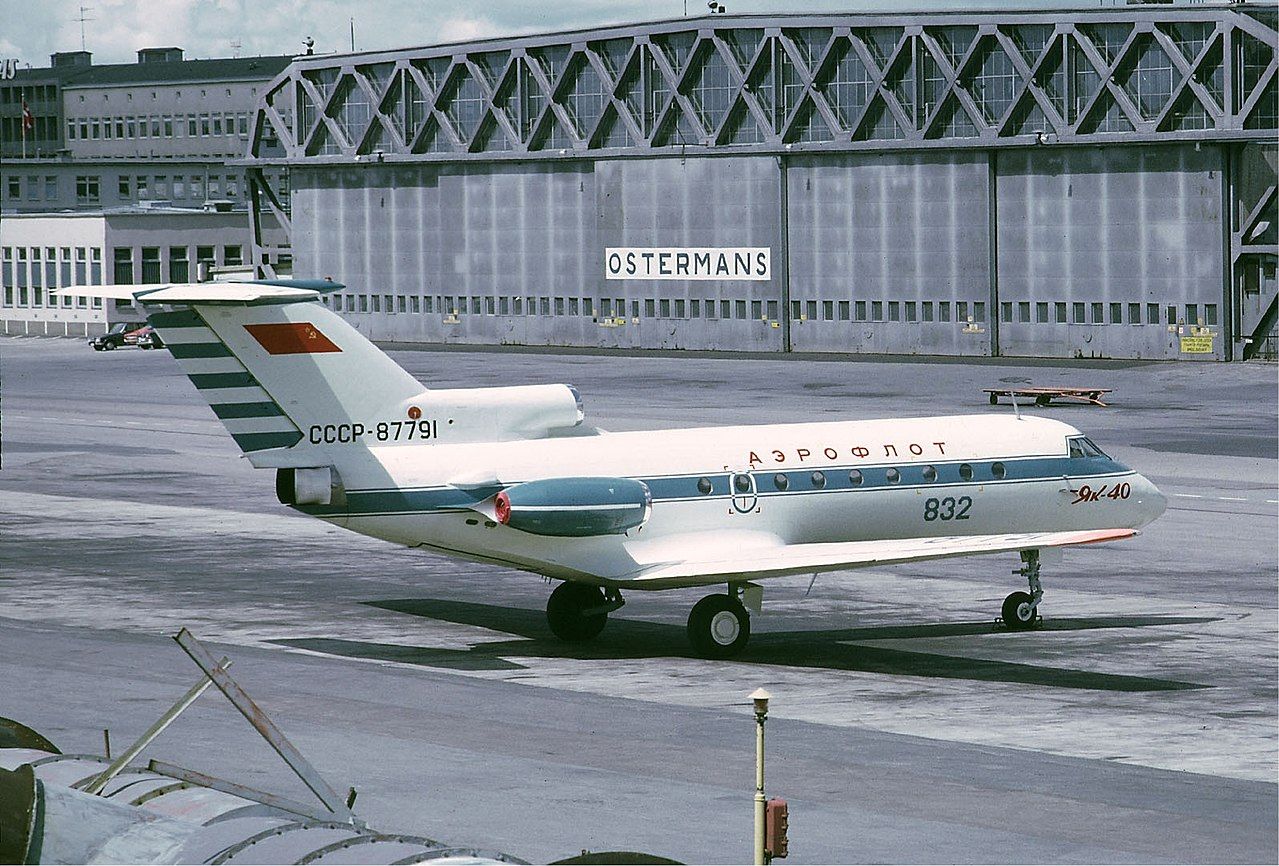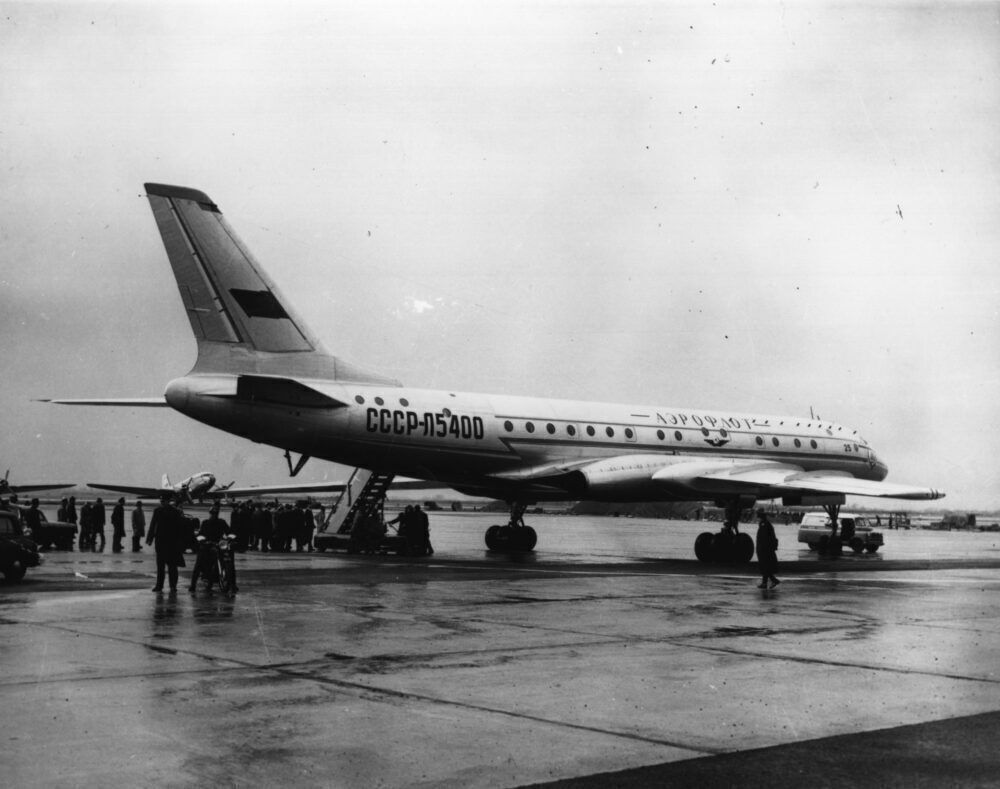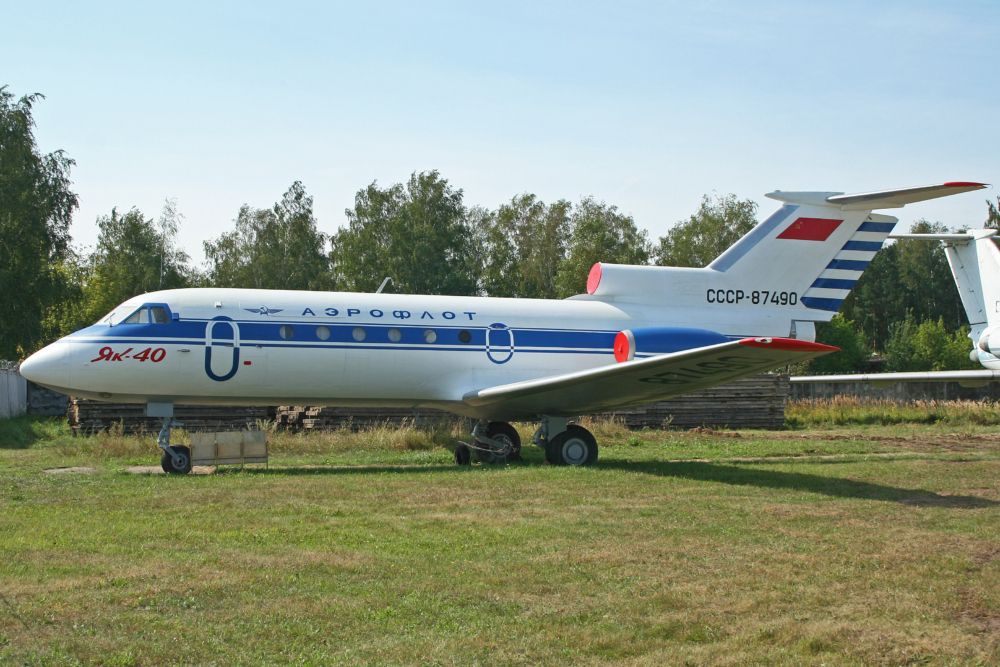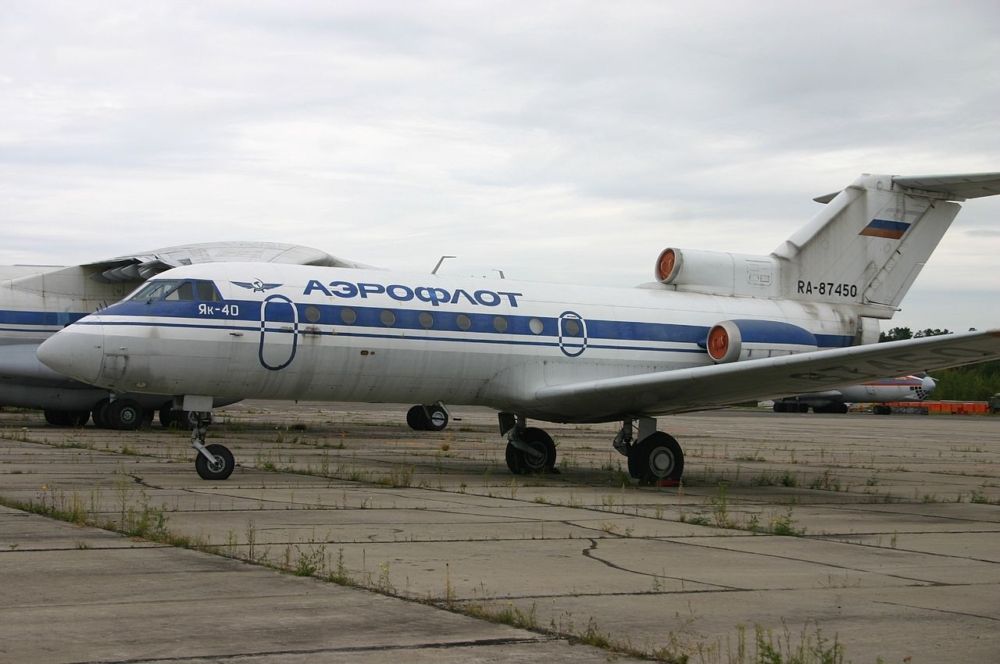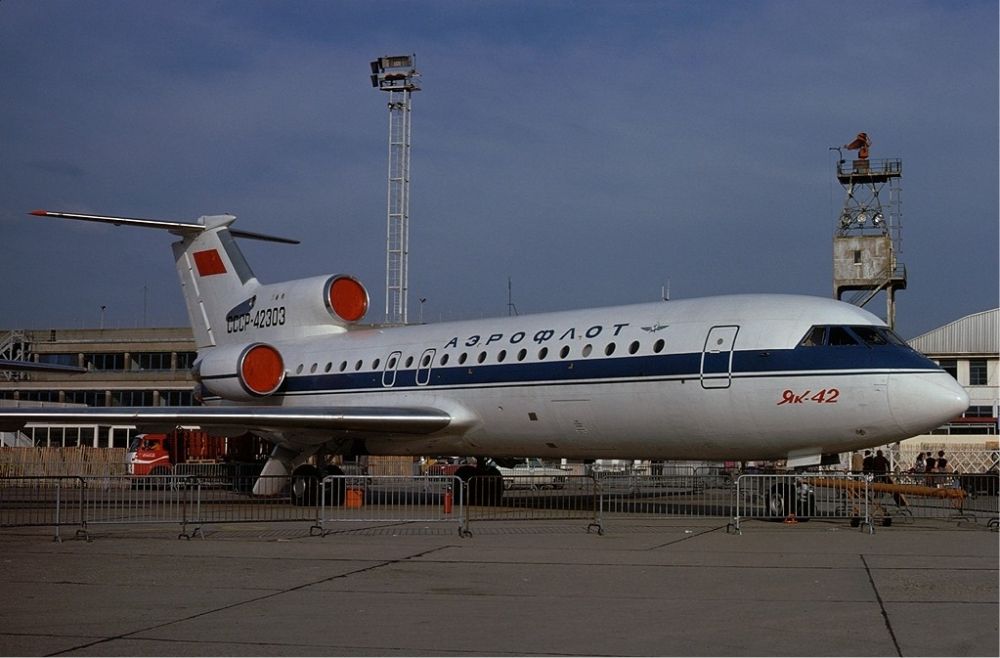It has been over half a century since the Yakovlev Yak-40 entered service in the Soviet Union. It was Aeroflot that introduced the trijet on its short-haul operations. Let’s take a look at why the plane was required in the first place.
A rapidly evolving market
Aleksandr Sergeyevich Yakovlev was one of the innovators of early Soviet Union aviation. During the 1920s, he was designing and building models such as the AIR-1, a two-seat light biplane, which paved the way for a series of future productions that became mainstays in the country.
After the end of World War II, the global aviation industry entered the jet age, which opened several doors for the Soviet Union. Aeroflot, the nation’s aviation powerhouse, consulted Tupolev, another design master in the country, to come up with a new solution as the airline was beginning to fall out of favor with the piston engines of the time.
Thus, Tupolev came up with the Tu-104, beating the likes of Boeing and Douglas to the post and building the second jetliner to enter commercial service. This aircraft would be seen on important national routes such as from Moscow to Irkutsk and would also be deployed to key international destinations such as Prague.
So, the Soviet airline industry had adapted to the jet age when it came to major operations. However, many local routes were still being conducted by aged aircraft that were taking off and landing at basic airfields with minimal resources.
Models such as the Lisunov Li-2, Ilyushin Il-12, and Ilyushin Il-14 were outdated by the late 1960s. Therefore, Aeroflot was keen to bring its fleet up to date on local routes. With the Soviet Union’s diverse expanse, the new builds would need to be flexible and able to operate in tough conditions.
Looking at all the options
Yakovlev had decades of experience managing programs related to local fleets. So, Aeroflot entrusted it to design an aircraft that could fly safely in and out of poorly equipped airports. Some runways were shorter than 700 m (2,300 ft) and unpaved. Many were also based in cold areas with plenty of snow. So, safety was a priority over speed.
The design bureau looked at turboprop and jet solutions following Aeroflot’s request. Even Vertical Take-Off and Landing (VTOL) prospects were analyzed. These designs would have had lift jets in the plane’s fuselage or mounted pods in the wing.
Nonetheless, the conclusion was to build a straight-winged tri-jet that would be able to carry between approximately 20 and 25 passengers. The plane would also be fitted with new AI-25 turbofans that were being developed by Ivchenko at Zaporizhzhia, Ukraine.
Altogether, up to 32 passengers could fit on the Yak-40 by switching from a three-abreast to a four-abreast seating layout. They entered by a flight of ventral airstairs that could be found at the rear of the aircraft. The customers and crew, which included a pilot, co-pilot, and flight mechanic, were supported by the pressurized fuselage that had a diameter of 2.4 m (94 in).
Stay informed: Sign up for our daily and weekly aviation news digests.
On its way
The aircraft took off for the first time on October 21st, 1966. Production then started at the Saratov Aviation Plant in the following year before the type was certified in the Soviet Union in 1968, the same year it was introduced.
On September 30th, 1968, Aeroflot entered the plane into passenger service. It would be seen on several domestic routes throughout the country.
One route was between Bykovo Airport, Moscow, and Bryansk Airport, Bryansk, which saw a hijacking occur on November 2nd, 1973. Four people took over the plane 10 minutes before landing for it to be diverted to Moscow’s Vnukovo airport. The hostages were eventually saved and two of the hijackers were killed after authorities stormed the plane.
The following year, a new edition of the Yak-40 was introduced with a greater range, along with a new forward door and a new setup of the doors and windows. Overall, 20 Yak-40 variants were designed or proposed.
The aircraft wasn’t only deployed on domestic routes. In fact, the plane played an integral part in opening up new opportunities for Yakovlev in foreign markets. Yakovlev highlights it was the first Russian aircraft that was certified “according to FAR-25 requirements.”
“Yak’s external economic links started in the middle of the 70s when Yak-40 aircraft was promoted for sale in foreign countries,” Yakovlev shares.
“A great scope of efforts was accomplished to certify Yak-40 according to requirements of Italy, Germany, England and other countries. Due to this important work, Yak-40 was sold in these countries.”
Leaving a legacy
The progress with the Yak-40 program inspired the design of the Yak-42, which was introduced at the turn of the 1980s. This model was the first airliner made in the Soviet Union to be backed by modern bypass turbofan engines. This type brought greater passenger comfort, lower fuel consumption, and lower noise levels.
Overall, the Yak-40 has left a notable mark on the industry. It can still be seen on operations with the likes of Severstal Air Company, Vologda Aviation Enterprise, and Motor Sich Airlines deploying it in recent years.
Today, Aeroflot doesn’t hold any Yakovlev units, and primarily flies Boeing and Airbus models. However, it does hold the Superjet 100, which is a product of Yakovlev’s fellow Rostec brand - Sukhoi. Moreover, the airline is set to take on additional Rostec units in the form of the Irkut MC-21, further Russifying domestic operations again.
What are your thoughts about the Yakovlev Yak-40? How do you feel it compares against its counterparts over the years? Let us know what you think of the plane and its operations in the comment section.

